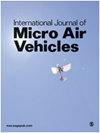Airflow-based odometry for MAVs using thermal anemometers
IF 1.5
4区 工程技术
Q2 ENGINEERING, AEROSPACE
引用次数: 0
Abstract
This article concerns airflow-based odometry for estimating MAV flight speed from airflow measurements provided by a set of thermal anemometers. Our approach relies on a Gated Recurrent Unit (GRU) based deep learning approach to extract deep features from noisy and turbulent measurement signals of triaxial thermal anemometers, in order to establish the underlying mapping between the airflow measurement and the flight speed. The proposed solution is validated on a multi-rotor MAV. The results show that the GRU-based model can effectively extract noise features and perform denoising, and compensate for induced velocity effects along the propellers’ rotation axis. As a consequence, robust prediction of the flight speed is performed, including during takeoff and landing that induce ground effects and strong variations of vertical airflow.使用热风速计的MAV基于气流的里程计
本文涉及基于气流的里程计,用于根据一组热风速计提供的气流测量值估计MAV飞行速度。我们的方法依赖于基于门控递归单元(GRU)的深度学习方法,从三轴热风速计的噪声和湍流测量信号中提取深层特征,以建立气流测量和飞行速度之间的基本映射。在多旋翼MAV上验证了所提出的解决方案。结果表明,基于GRU的模型可以有效地提取噪声特征并进行去噪,并补偿沿螺旋桨旋转轴产生的速度效应。因此,对飞行速度进行了稳健的预测,包括在起飞和着陆期间,这会引起地面效应和垂直气流的强烈变化。
本文章由计算机程序翻译,如有差异,请以英文原文为准。
求助全文
约1分钟内获得全文
求助全文
来源期刊

International Journal of Micro Air Vehicles
ENGINEERING, AEROSPACE-
CiteScore
3.00
自引率
7.10%
发文量
13
审稿时长
>12 weeks
期刊介绍:
The role of the International Journal of Micro Air Vehicles is to provide the scientific and engineering community with a peer-reviewed open access journal dedicated to publishing high-quality technical articles summarizing both fundamental and applied research in the area of micro air vehicles.
 求助内容:
求助内容: 应助结果提醒方式:
应助结果提醒方式:


